Luxor Temple
History & Complete Travel Guide
Discover the essence of Luxor, where modern life meets ancient history. As you stroll along the Nile Corniche, the impressive pylon of Luxor Temple rises before you, its sandstone walls shimmering in the afternoon sun. This site, over 3,400 years old, has witnessed pharaohs, Roman emperors, and Christians leave their mark, while the call to prayer from the Abu Haggag Mosque echoes through the courtyard.
Luxor Temple is a living monument, showcasing the intertwining of kingship, faith, and community. During the day, its carvings tell tales of the Opet Festival, and at night, floodlights illuminate its grandeur, creating stunning shadows against the night sky. Visiting Luxor Temple is stepping into the vibrant heart of Egypt.
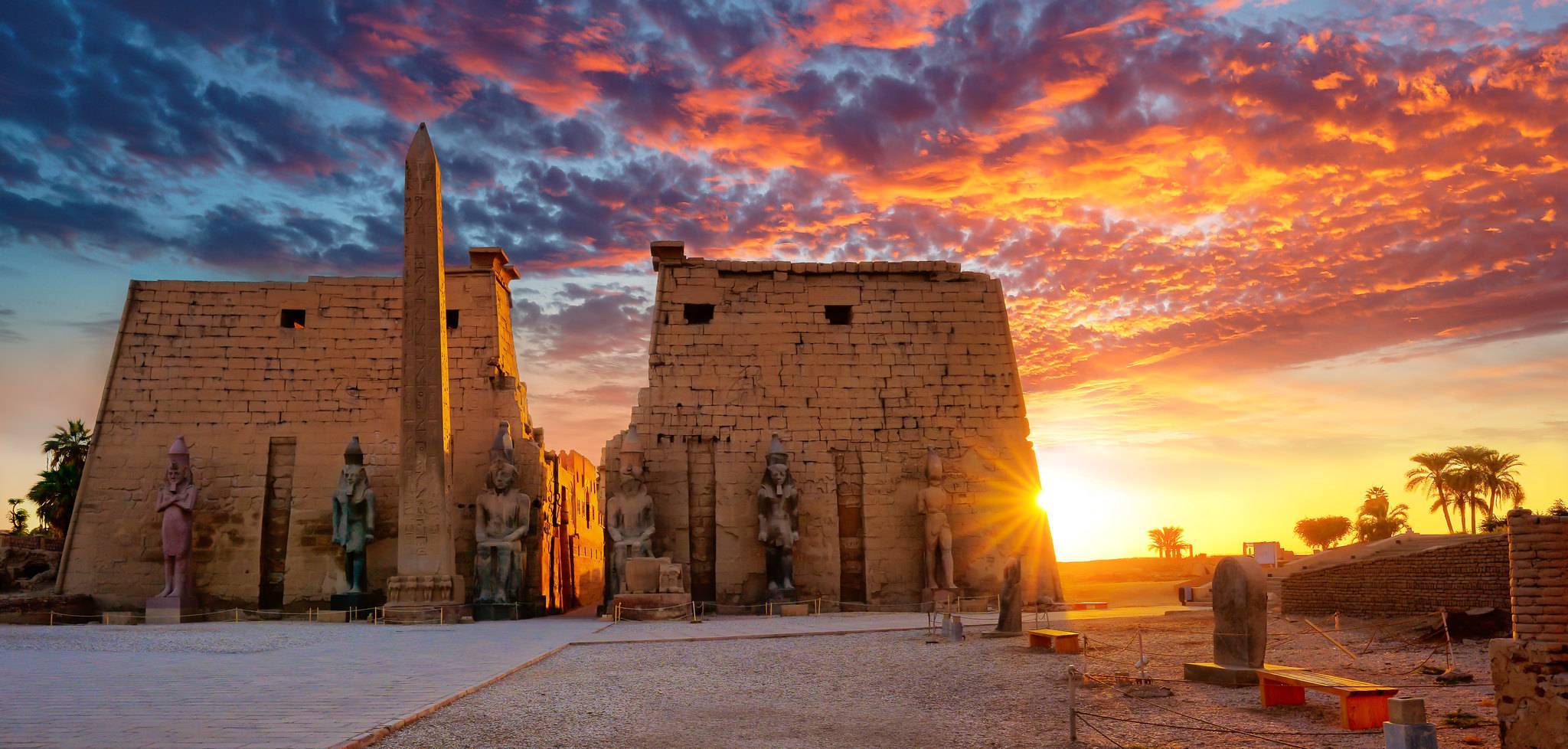
What is Luxor Temple?
Luxor Temple is one of the most famous sites in ancient Thebes, located on the East Bank of the Nile in modern Luxor. Unlike Karnak Temple, which was mainly a large religious complex, Luxor Temple was unique as a temple for the kingship. Pharaohs were crowned here, and their right to rule was confirmed during the annual Opet Festival. During this event, the sacred boats of Amun, Mut, and Khonsu traveled from Karnak to Luxor. The temple is dedicated to the Theban Triad and showcases impressive architecture from the New Kingdom with its large pylons, tall columns, and sacred rooms. Today, it stands as both a historical site and an important symbol of Egypt’s rich cultural heritage.
Luxor Tours & Activities
Looking to save some costs on your travel? Why not join a shared group tour to explore Luxor, Egypt? Here are some activities you might be interested in:
Location of Luxor Temple
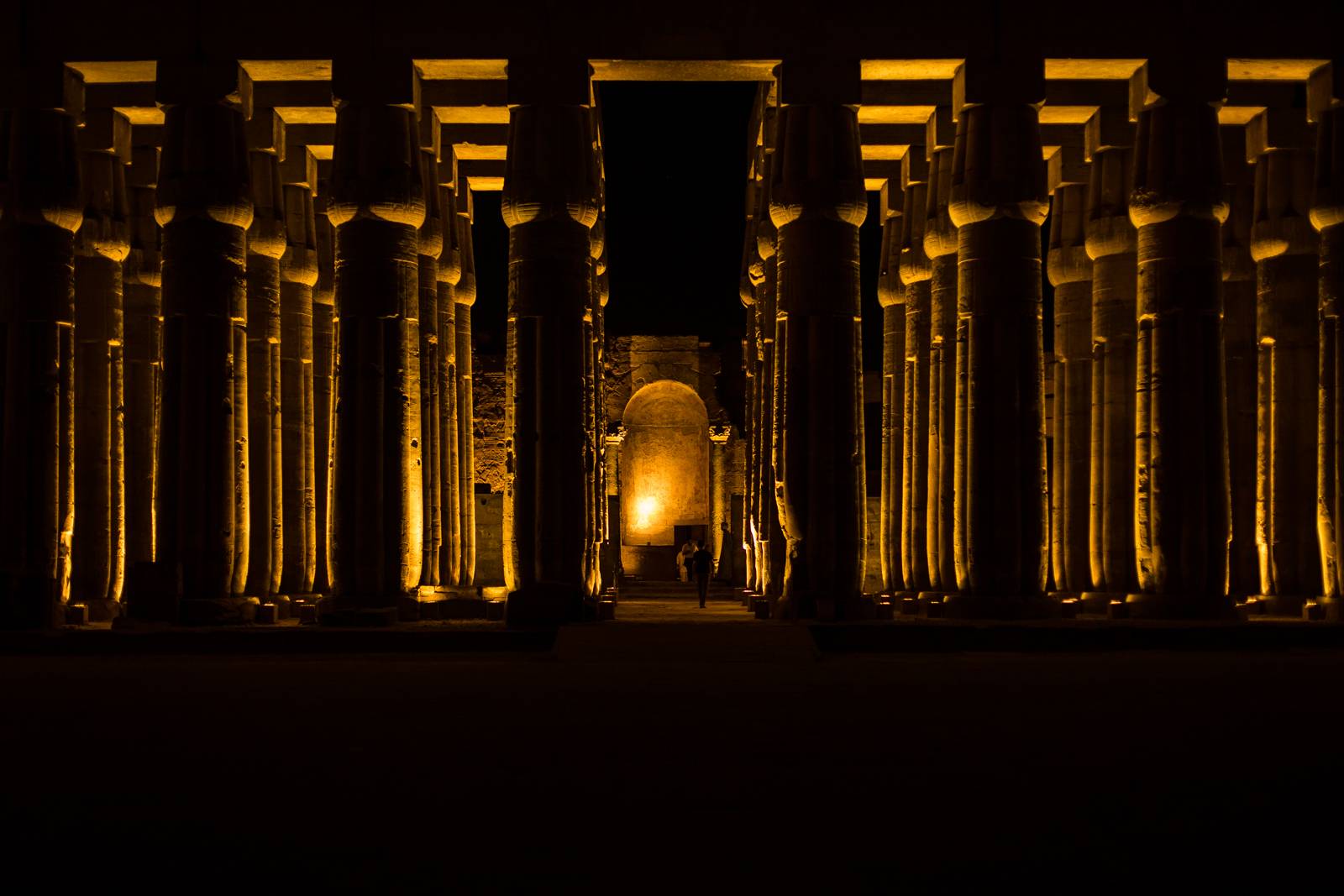
The History of Luxor Temple: Pharaohs, Romans, and Beyond
The story of Luxor Temple starts in the 14th century BCE when Pharaoh Amenhotep III of the 18th Dynasty ordered its construction. Amenhotep, known as one of Egypt’s greatest builders, wanted to create a unique temple in Thebes. While Karnak was for the daily worship of Amun-Ra, Luxor Temple served to show the power of the pharaoh.
Later rulers added to Amenhotep’s vision. Tutankhamun and Horemheb added carvings and decorations, while Ramesses II made a significant impact with giant statues, tall pylons, and obelisks at the entrance. The temple became the main site for the Opet Festival, when the sacred boats of Amun, Mut, and Khonsu traveled from Karnak to Luxor, symbolizing fertility, renewal, and the cycle of kingship.
Luxor Temple’s story continued beyond the pharaohs. Under Roman rule, it became a military camp and a center for emperor worship. In the Christian era, some chapels turned into churches, with paintings of saints covering ancient carvings. During the Islamic period, the Abu Haggag Mosque was built on the ruins and still operates today.
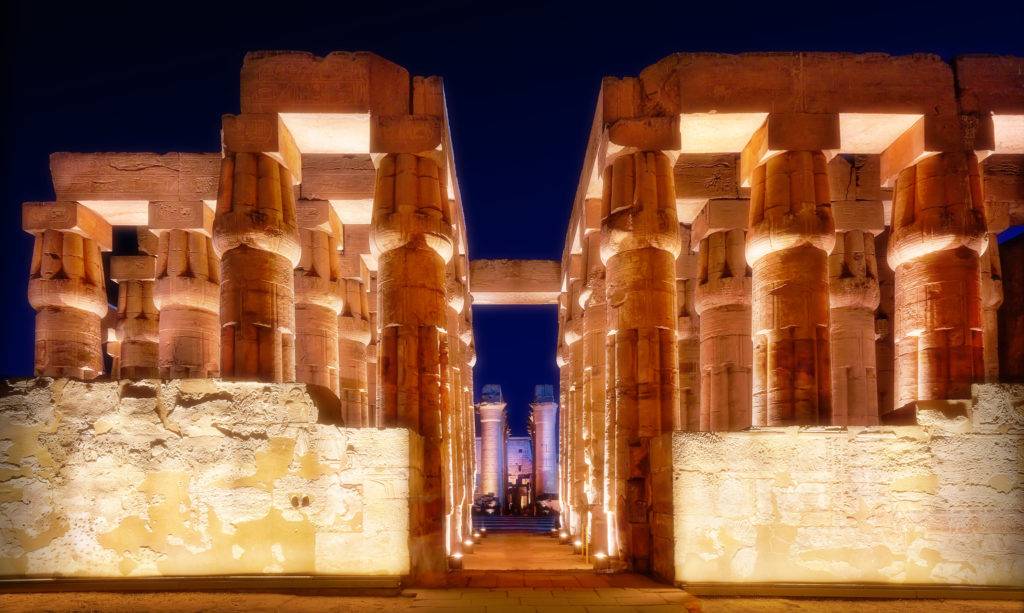
Architectural Highlights You Can’t Miss
Exploring Luxor Temple feels like walking through a book about ancient Egyptian architecture, where every pylon, column, and courtyard shares a story. To appreciate the site fully, it helps to move in the order ancient visitors did.
1. The First Pylon of Ramesses II
You start at the grand pylon built by Ramesses II, one of Egypt’s most famous pharaohs. This structure rises nearly 24 meters high, with walls carved with scenes from the Battle of Kadesh, where Ramesses defeated the Hittites. These carvings served as propaganda to show the pharaoh’s power to everyone who entered.
2. The Colossal Statues of Ramesses II
At the entrance stand the enormous seated statues of Ramesses II, each over 15 meters tall. Some are damaged, but their size is still impressive. Standing before them, you feel how the pharaoh wanted to show his everlasting presence.
3. The Obelisks
Originally, two obelisks stood at the entrance. Today, only one is still there; the other was given to France in the 1800s and now stands in Paris at the Place de la Concorde. The remaining obelisk, made from pink granite, has hieroglyphs that honor Amun and Ramesses II.
4. The Courtyard of Ramesses II
Beyond the pylon lies a large courtyard, surrounded by two rows of papyrus-bundle columns. This open space once held ceremonies and gatherings. The mix of open sky and tall columns creates a powerful feeling of space.
5. The Colonnade of Amenhotep III
The Colonnade Hall is a key feature of Luxor Temple, stretching 100 meters long with 14 huge columns, each standing 19 meters high. Later, Tutankhamun and Horemheb decorated this area. Their carvings show the Opet Festival, featuring priests, musicians, dancers, and the pharaoh affirming his power.
6. The Hypostyle Hall of Amenhotep III
Next is the Hypostyle Hall, featuring 32 tall columns arranged in four rows. This creates a “forest of columns,” a typical design in Egyptian temples. The columns are carved with hieroglyphs and images of gods, adding to the sacred feeling.
7. The Inner Sanctuaries
At the temple’s center is the Sanctuary of Amun, where kings performed rituals. Later, Alexander the Great added his shrine here, blending Greek and Egyptian traditions. This mix of cultures shows Luxor Temple’s long history.
8. The Abu Haggag Mosque
Above the ancient courtyard is the Abu Haggag Mosque, which is still used today. Built in the 11th century, it stands on the temple ruins, symbolizing the continuation of worship across different faiths. Its white walls and minaret contrast sharply with the sandstone columns below.
9. The Avenue of Sphinxes
Finally, visit the Avenue of Sphinxes, a ceremonial road that stretches nearly 3 kilometers to Karnak Temple. Once lined with over 700 sphinx statues, this route was used during the Opet Festival. Today, some sections have been restored, allowing visitors to walk where ancient priests once walked.

Why is the Luxor Temple Famous
Luxor Temple is famous for its size, beauty, and important meaning. It served as a place for pharaohs to establish their authority. It is one of the few ancient sites still in use after over three thousand years.
What makes it special includes:
– A mix of pharaonic, Roman, Christian, and Islamic history
– The evening atmosphere, where lights turn the temple into a stunning sight
– Its role in the Opet Festival, a key religious event in ancient Egypt
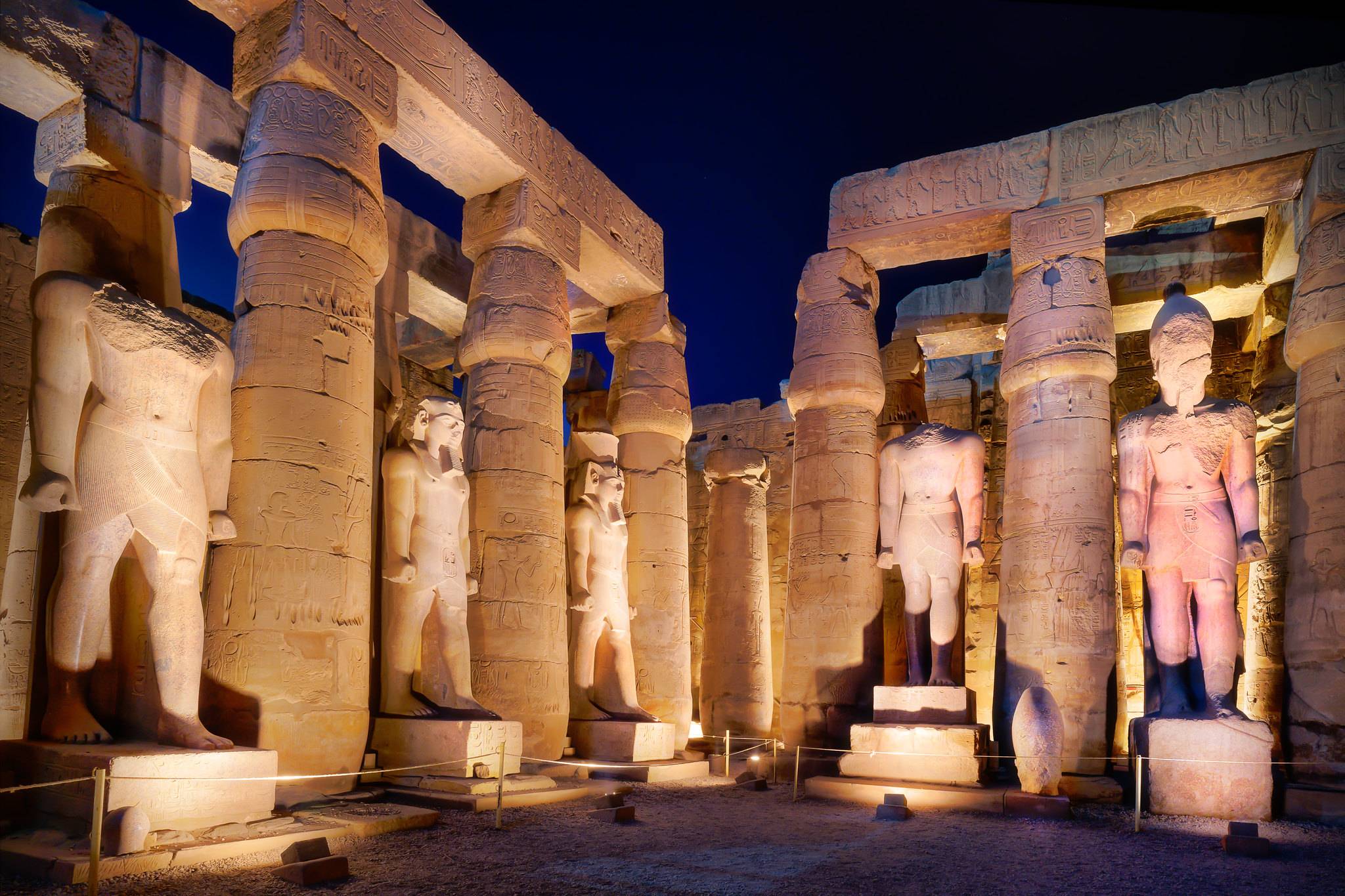
Practical Visitor Information
Planning your visit well ensures you get the most out of Luxor Temple.
- Location: East Bank, Luxor city center, near the Nile Corniche
- Opening Hours:
Summer Working Hours: from 06:00 am to 07:00 pm
Winter Working Hours: from 06:00 am to 07:00 pm
Ramadan Working Hours: from 06:00 am to 07:00 pm
Entrance Fees: Adult EGP 500 – Student EGP 250
- Recommended Duration: 1–2 hours
- What to Wear: Light, breathable clothing, modest attire (especially near the mosque), and comfortable shoes
- Safety: The site is secure and tourist-friendly, with staff and signage
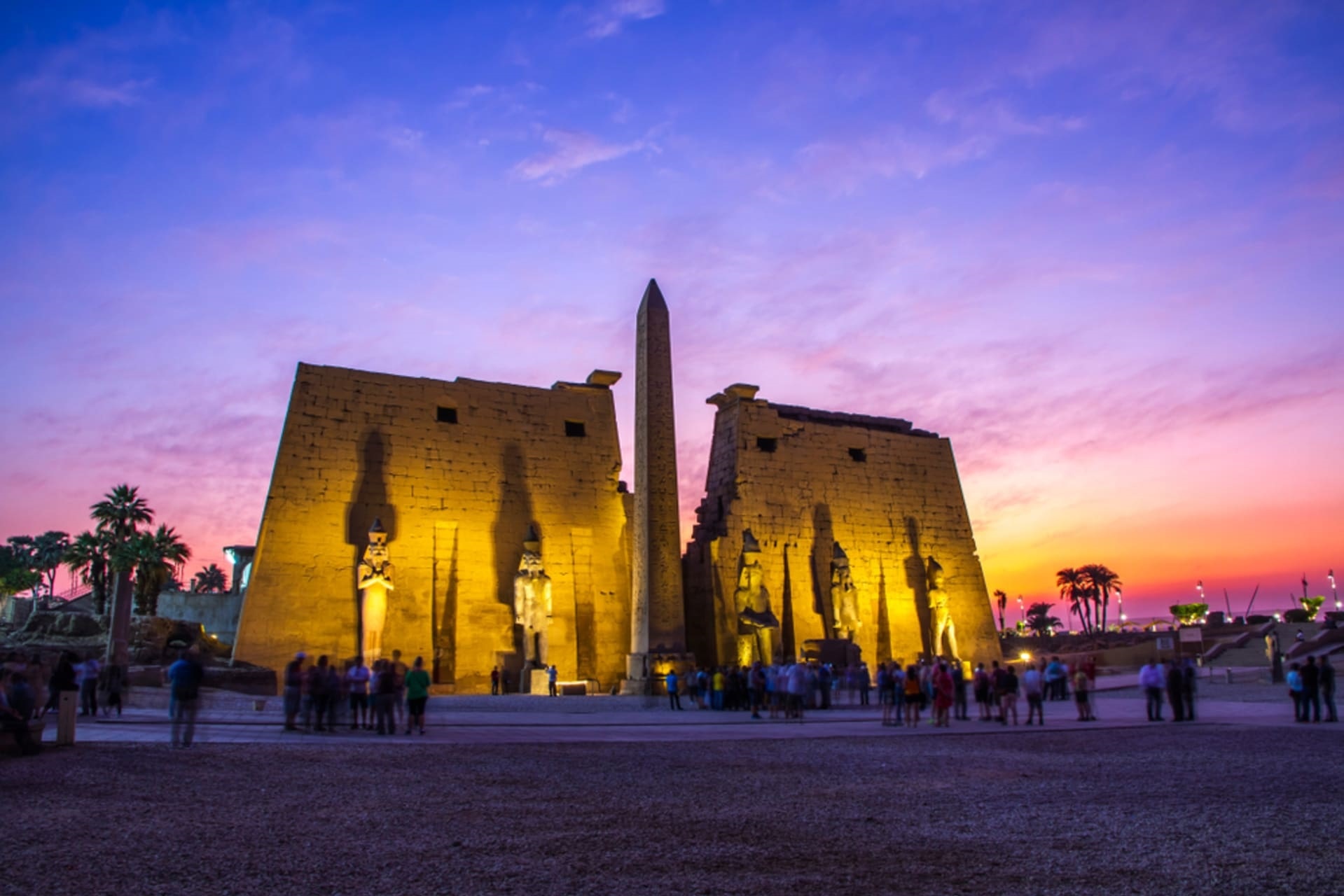
Best Time to Visit Luxor Temple
- Daytime: Best for studying reliefs and details in natural light
- Sunset: Magical golden glow on the sandstone, perfect for photography
- Nighttime: The temple is floodlit, creating an unforgettable atmosphere
Seasonally, the best months are October to April, when temperatures are cooler. Summers can be extremely hot, so evening visits are recommended.
A Living Masterpiece of Ancient Egypt
Luxor Temple is more than just a historical site; it tells a story that spans centuries. It was built by pharaohs, later used by Romans, painted by Christians, and is still a place of prayer for Muslims. This temple shows how Egypt has maintained its traditions through many changes.
For visitors, it offers a rich experience beyond just history. You can enjoy its beautiful atmosphere and feel connected to the timeless themes of leadership, faith, and human creativity. Whether you visit at sunrise, sunset, or night, Luxor Temple will make you feel like you’ve entered the heart of ancient Egypt.
When planning your trip to Egypt, make sure to put Luxor Temple at the top of your list.
Got a Question?
F.A.Qs
It was built around 1400 BCE, making it over 3,400 years old.
Primarily Amenhotep III, with additions by Tutankhamun, Horemheb, and Ramesses II. Later modifications were made by Alexander the Great and the Romans.
Absolutely—it’s one of the most atmospheric and historically layered sites in Egypt.
It’s located in the city center, easily accessible by foot, taxi, or as part of a guided tour.
Yes, and it’s highly recommended for the magical floodlit experience.
Did you know that
By purchasing through our links, you support us at no additional cost.
Thank you for your support. ♥️
